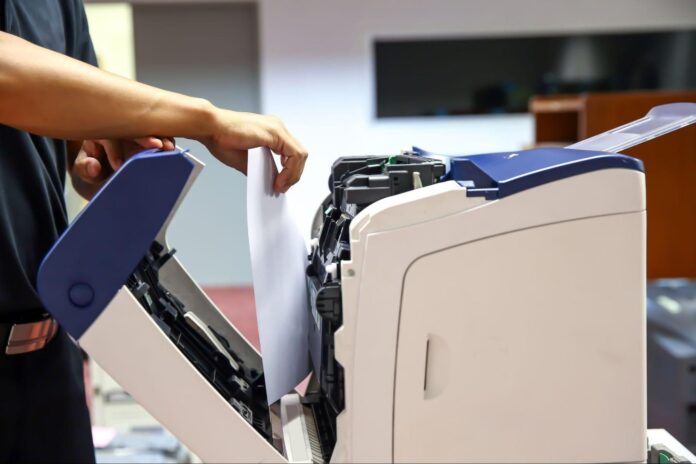One of the most critical functions in an office environment is printing documents using an office printer. For office workers, understanding printing etiquette plays a significant part in keeping the office running smoothly and adhering to environmentally conscious policies regarding paper usage.
Whether you need to print financial statements or contracts, it is essential to be mindful of your usage of printed documents and other colleagues sharing the same printer. Follow these printing etiquette rules so you can print what you need for your daily work tasks.
1. Replace Ink and Toner Cartridges
If you notice smudged text or streaks in your printed document, you may need to replace the printer’s ink or toner cartridge. A computer or printer message usually shows the ink and toner levels. Replace the printer cartridge with your printer’s preferred Epson inkjet cartridges or toner, which can be found at inkjetsuperstore.com, as soon as you see the notification so that your colleagues do not print an unusable document.
2. Replenish Paper Trays as Needed
You may be frustrated when you go to the printer and find that there is no paper, especially before an important presentation or meeting. Whenever you receive a printer warning notifying you that the paper supply is low, take a moment to refill the paper trays.
Keeping paper trays stocked can avoid empty trays and printing delays. In an office setting, keeping professional-quality printer supplies near the printer is a simple courtesy for your coworkers so that they can print their documents on time for important tasks.
3. Print Only What You Need
Printing requires costly resources such as paper, ink and toner cartridges. The more your office uses, the higher the costs are for the company — only print documents when necessary to avoid paper waste. An average office worker uses four dozen sheets of paper per day, half of which ends up as waste.
Ask your managers about your office’s printing policies. They may limit the number of documents you can print or the printer settings. Consider printing on both sides of the paper or re-scaling a spreadsheet to one sheet to ensure you print only what you need. Use as little paper as possible when printing monthly reports and expense reports.
You can also use the print preview option before printing to catch errors. Check that the document fits the size of paper you’re using and avoid duplicate printing jobs.
4. Leave Documents That Are Not Yours
If you come across documents that are not yours, it is a common courtesy to leave them where you found them. Take the time to sort through your prints and carefully set aside documents that do not belong to you. If you know who the documents belong to, consider dropping them off at their workstation. If you aren’t sure who printed the papers, place them in a neat pile on or near the printer tray.
Introduce a file organizer for unclaimed printed documents if your company lacks one, and you reduce the number of lost prints. A file organizer creates a central space for lost or missing documents so that every employee knows where to put unclaimed documents or look for papers they have printed.
5. Collect Your Documents Right Away
When you finish printing documents, go to the printer and pick them up — claiming your papers immediately after printing prevents the accumulating clutter of paper from piling up. Leaving documents behind may confuse your colleagues and force them to sift through piles of documents to search for their own. You may also risk having your documents mixed up with someone else’s, necessitating a reprint.
6. Don’t Leave a Paper Jam
If your printer jams during your print job, get help fixing the problem. Leaving a paper jam for your coworkers to deal with is inconvenient and inconsiderate. Check the printer for instructions on how to fix a paper jam. You may need to inspect the paper tray or open the printer’s compartments. If you’re unable to fix the problem yourself, call tech support, who can show you how to fix the jam.
7. Don’t Change the Printer Settings
The default print settings work in most office environments. Don’t change the printer settings unless you need to do so for a particular print job. Check with your management team and coworkers before changing a printer setting if your job requires it, so they are aware of the shift.
If your print job requires a particular setting, reset the original settings after you finish printing. This helps your coworkers avoid printing a presentation or document in the wrong format, which can cause frustration and time delays and cost the office money.
8. Allow People with Smaller Print Jobs to Go First
In some situations, your colleagues may have smaller print jobs than yours. You may need to print several lengthy contracts for a new client while your coworker only needs to print a short report.
Allow your fellow employees to complete their print job before you in these situations. If you have other printers in the office, you can also designate certain printers for large print jobs and other printers for smaller ones so that everyone can get their copies on time.
9. Avoid Using the Office Printer for Personal Documents
Office printers are there for your professional convenience. If no one else is printing documents, it may be all right to use them for personal documents such as bank statements and credit reports.
However, printing personal documents may not be the best choice if others are waiting to use the printer. If you plan to print personal documents on the office printer, check with the office manager or tech support first for your office policy regarding personal information. Some workplaces may prohibit excessive use of office equipment, including the printer, for private print jobs.
Printing Courtesy Is Essential in the Workplace

Printing etiquette is about respecting others in the office and considering your coworkers when printing. Printing etiquette requires you to print only what you need and fix printer issues as soon as you notice them so that the printer is ready for the next person to use. Also, use available printer supplies to replenish paper and ink cartridges when low.
You can make printing courtesy a habit to help your colleagues save time, cut down on paper waste and keep your company running efficiently.











